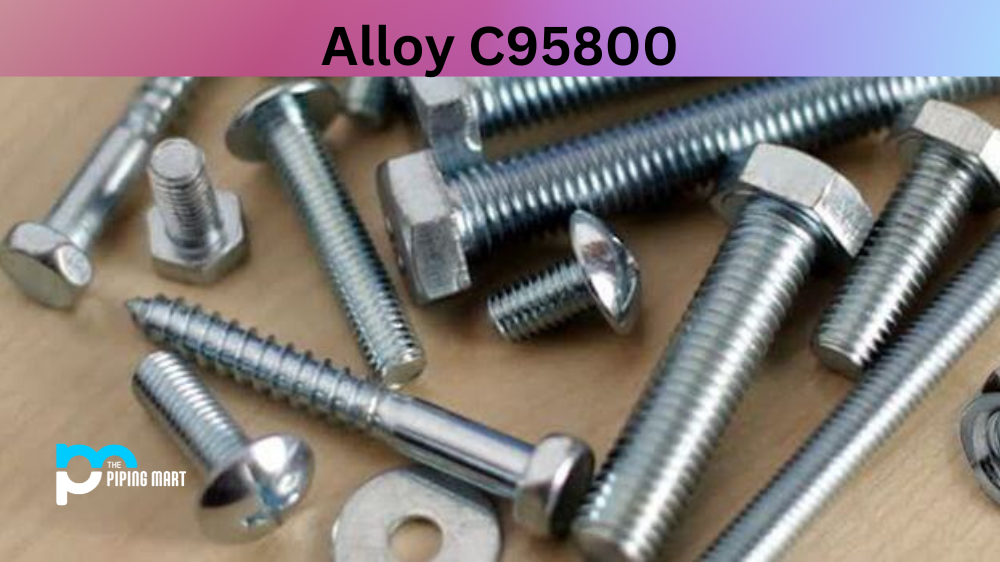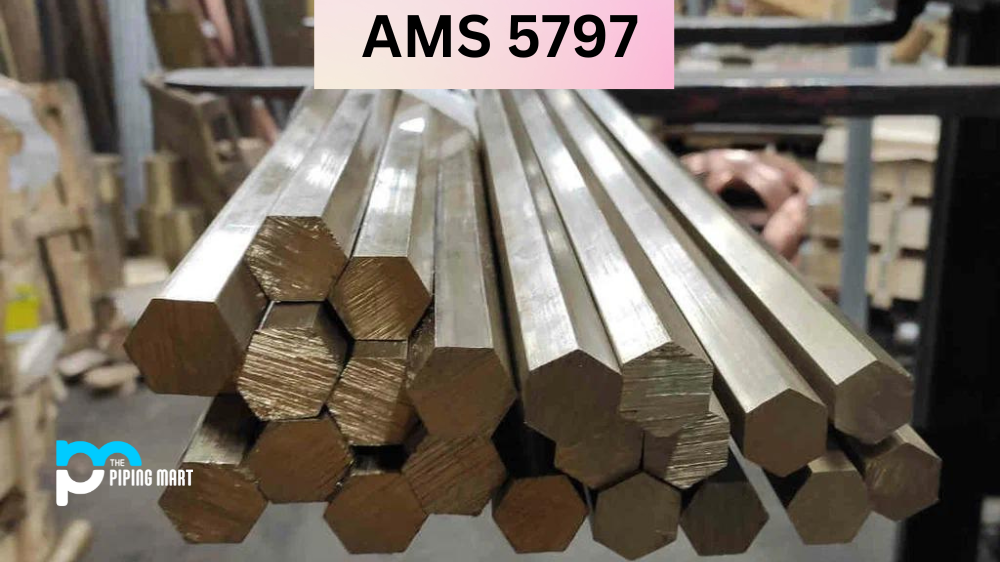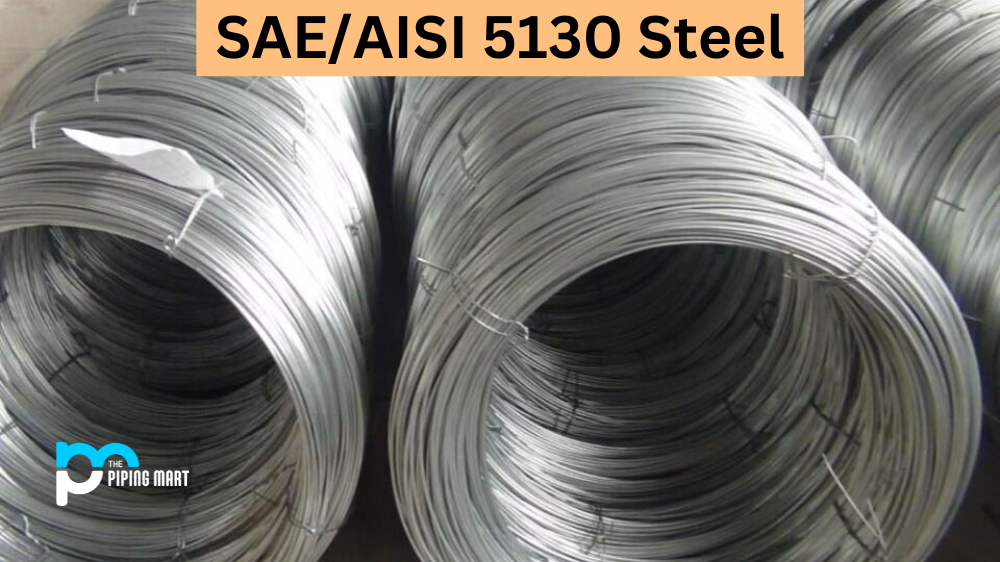Alloy C95800, or aluminium bronze, is a popular copper-based alloy. It comprises copper, zinc, aluminium, and iron, offering superior mechanical and physical characteristics. The alloy is corrosion-resistant, making it ideal for use in marine environments. This blog post will discuss the composition, physical and mechanical properties, uses, hardness, heat treatment, welding, and corrosion-resistant of Alloy C95800.
C95800 Composition
Alloy C95800 comprises 78-82% copper, 10-12% aluminium, 3-5% nickel, 2.5% iron, and 1.5% zinc. This combination offers good resistance to erosion and corrosion, high strength, high flexibility, and good thermal and electrical conductivity.
| Element | Content (%) |
|---|---|
| Cu, Copper | 79.0 |
| Al, Aluminium/Aluminum | 8.50-9.50 |
| Ni, Nickel | 3.50-4.50 |
| Mn, Manganese | 0.80-1.50 |
| Fe, Iron | 0.030 |
C95800 Physical Properties
Aluminium bronze is a dense and tough alloy. Its physical properties include:
- A density of 7.8 g/cm3.
- A melting point of 1005-1025°C.
- At room temperature, a thermal conductivity of 37 W/(m·K).
It is also non-magnetic, making it ideal for magnetic-sensitive applications such as MRI machines.
C95800 Mechanical Properties
Aluminium bronze has superior mechanical properties, including high yield and strength. It has a tensile strength of 820 MPa, yield strength of 420 MPa, and a 25% extension threshold. It is also ductile so that it can be easily shaped and moulded without fracturing.
| Properties | Metric | Imperial |
|---|---|---|
| Hardness, Brinell (3000 kg load; sand cast) | 159 | 159 |
| Hardness, Rockwell B (cast and annealed) | 84.0-89.0 | 84.0-89.0 |
| Hardness, Rockwell B (permanent mold cast) | 88 | 88 |
| Tensile strength (cast and annealed) | 585 MPa | 84800 psi |
| Tensile strength (sand cast) | 655 MPa | 95000 psi |
| Tensile strength (permanent mold cast) | 660 MPa | 95700 psi |
| Yield strength (cast and annealed) | 240 MPa | 34800 psi |
| Yield strength (sand cast) | 262 MPa | 38000 psi |
| Yield strength (at strain 0.500%/permanent mold cast) | 360 MPa | 52200 psi |
| Elongation at break (in 50 mm (2 in.); cast and annealed) | 15.00% | 15.00% |
| Elongation at break (permanent mold cast) | 17.00% | 17.00% |
| Elongation at break (sand cast) | 25.00% | 25.00% |
| Reduction of area (cast and annealed) | 16.00% | 16.00% |
| Compressive strength (at 0.1% permanent set; cast and annealed) | 240 MPa | 34800 psi |
| Compressive strength (at 1% permanent set; cast and annealed) | 330 MPa | 47900 psi |
| Compressive Strength (at 10% permanent set; cast and annealed) | 690 MPa | 100000 psi |
| Charpy impact (at -23-66°C/-9.40-151°F/ Keyhole) | 13.0 J | 9.59 ft-lb |
| Charpy impact (at -23-66°C/-9.40-151°F/ V-notch) | 22.0 J | 16.2 ft-lb |
| Fatigue strength (at number of cycles 1.00e+8/ rotating beam) | 230 MPa | 33400 psi |
| Machinability (UNS C36000 (free-cutting brass) = 100) | 50% | 50% |
| Shear modulus | 42.0 GPa | 6090 ksi |
| Poisson’s ratio | 0.34 | 0.34 |
| Elastic modulus | 117 GPa | 16969 ksi |
C95800 Thermal Properties
| Properties | Metric | Imperial |
|---|---|---|
| Thermal expansion co-efficient (at 20-300°C/68-572°F) | 16.2 µm/m°C | 9.00 µin/in°F |
| Thermal conductivity (at 20°C/68°F) | 36.0 W/mK | 250 BTU in/hr.ft².°F |
C95800 Equivalents
- ASTM B148
- ASTM B271
- ASTM B30
- ASTM B505
- ASTM B763
- ASTM B806
- MIL B-24480
- QQ C390
- SAE J461
- SAE J462
C95800 Uses
Aluminium bronze is a versatile alloy with various applications. It is widely used in the construction of marine hardware, such as propellers, shipbuilding, and offshore drilling equipment. The alloy is also used in high-stress applications, including hydraulic systems and aircraft parts.
C95800 Hardness
Aluminium bronze has excellent wear resistance and hardness due to its aluminium content. Its hardness ranges from 200 to 230 Brinell hardness number (BHN), making it ideal for high-load and high-abrasion applications.
C95800 Heat Treatment
Aluminium bronze is a heat-treatable alloy which can be hardened by quenching or tempering. The quenching process involves heating the alloy to 800-850°C and cooling it in oil. The tempering process consists of reheating the alloy to 450-600°C and slowly cooling it in air. The heat treatment process improves the alloy’s hardness and tensile strength.
C95800 Welding
Aluminium bronze can be welded using various welding techniques, including gas tungsten arc welding (GTAW), gas metal arc welding (GMAW), and manual metal arc welding (MMAW). However, the alloy must be preheated before welding to prevent cracks and ensure a strong weld.
C95800 Corrosion Resistant
Aluminium bronze is known for its excellent corrosion resistance. It is resistant to seawater, atmospheric corrosion, and most acids, making it ideal for use in marine and chemical environments. The alloy’s corrosion resistance is due to its aluminium content, which forms a protective oxide layer on its surface.
Conclusion
Aluminium bronze, or Alloy C95800, is a popular copper-based alloy with various mechanical and physical properties. Its composition comprises copper, zinc, aluminium, and iron, giving it excellent corrosion resistance and strength. The alloy is used in marine hardware, aircraft parts, and high-stress applications due to its high tensile strength and hardness. It is also weldable and heat treatable, making it versatile for many applications. Overall, alloy C95800 is a valuable and sought-after alloy with many uses in different industries.

Abhishek is a seasoned blogger and industry expert, sharing his insights and knowledge on various topics. With his research, Abhishek offers valuable insights and tips for professionals and enthusiasts. Follow him for expert advice on the latest trends and developments in the metal industry.




